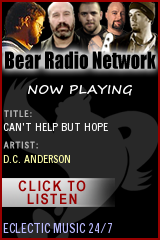National GLBTQ organzations
receive mixed grades on bisexual representation
an original report by Ron J. Suresha
for Huffington Post Gay Voices, Thursday, Feb. 28, 2013
Where’s the B?
(in national GLBTIQA nonprofit groups)
The Bisexual activist community has long been reluctant to approach national LGBTQ (lesbian gay bisexual transgender and queer) organizations asking for their support, fearing that such requests for a hand-up would be seen as begging for a handout. Yet it is unclear how many of these national gay-rights groups have worked proactively to embrace, support, and develop the Bisexual component within their own organization’s inner structure.
Given the overwhelming evidence in the past few years showing bisexual persons exist in greater numbers than the combined gay male, lesbian, and transgender populations, we must ask whether some of the national queer orgs that send out donation requests demanding that we “Demand equality for everyone!” are themselves paying attention to the particular needs of bisexual folks. Not merely as lip service, not just an afterthought, not only as the B in the LGBTQ, but in any sort of tangible way.
Noting that none of the following ten national organizations include the word “bisexual” or even include the letter B in their name, I called and emailed media representatives of these groups about their bisexual policies and leadership for this report. The communications contacts for these organizations were given a month to reply by phone or email to the following subjects.
![]()
The questionnaire:
Eight metrics of Bisexual representation and leadership
- Does the organization have full-time personnel solely dedicated to advancement of bisexual issues or advocacy for bisexual clients and/or members?
- How does the organization provide services for or market to bisexual persons?
- Does the organization have out bisexual persons on its board of directors, executive board, or foundation board? If so, please provide their names and positions in the organization.
- Are bisexuals specifically mentioned in the organization’s mission statement?
- Does the organization recruit bisexuals among its members?
- Does the organization include bisexual persons on its staff and among its volunteers?
- Does the organization educate its staff and volunteers on bisexuality and biphobia?
- Does the organization’s Website have the word “bisexual” or “bisexuality” (not just the B) listed among its topics or tabs?
Scale = 0 – 6. No reply = 0. Negative reply = 2. Neutral reply = 4. Positive reply = 6. Maximum = 48 points.
41 – 48 points = A. 33 – 40 points = B. 25 – 32 points = C. 17 – 24 points = D. 9 –16 points = E. 0–8 points = F.
Report Card: LGBTQ orgs get mixed grades on bisexual representation
National Gay and Lesbian Task Force (The Task Force) A–
Point Foundation B+
Gay & Lesbian Victory Fund B
Marriage Equality USA B–
Gay and Lesbian Medical Association (GLMA) B–
Log Cabin Republicans D+
Gay & Lesbian Alliance Against Defamation (GLAAD) F
Human Rights Campaign (HRC) F
National Center for Lesbian Rights F
National Gay & Lesbian Journalist Association (NLGJA) F
Read the complete results of the questionnaire here.
Results from the questionnaire
According to the responses, it appears that there is nobody devoted specifically to bisexual issues or bisexual advocacy in these groups.
The Gay & Lesbian Task Force scored well on all other questions, demonstrating their understanding of the complexity of the bisexual constituencies they serve, sensitivity about biphobia and bisexual invisibility, and proactive attitude to ensure that bisexual persons can be counted among their leadership. Task Force Director of Communications Inga Sarda-Sorensen provided me with names of several out bi persons on their board and senior staff, a positive sign of their commitment to Bi inclusion.
Surprisingly, although they were given ample time and opportunity to respond to the few short, mostly yes-or-no questions, four organizations felt the matter was not important enough to provide any answer at all, and thus flunked in this report card: HRC, GLAAD, NLGJA, and NCLR.
The missing responses from these nonprofits do not indicate that they do not provide actual, even vital, services and support for their bi constituencies. Indeed, as noted below, groups like HRC and NCLR have undertaken important projects for bisexual rights; however, when given the opportunity to go on the record for this report, these four organizations chose to remain silent.
Bisexual advocates welcomed the information about how the B factor is being represented on the national LGBTQ stage. The Bisexual Organizing Project (BOP) of Minneapolis, has been spearheading a similar project to evaluate the inclusiveness of LGBTQ organizations in the Upper Midwest.
In response to the results of the present investigation, Lauren Beach, former BOP chairperson stated, “The questions developed to grade these organizations provide a springboard to establish more in-depth evidence-based benchmarks measuring bisexual inclusion and advocacy in the future. I hope these national organizations will take note of this report card and work to become more accountable to bisexuals, who make up over half of the GLBT community. Any national LGBTQ organization that does not specifically commit itself to bisexual inclusion should know it is targeting less than half of the LGBTQ population.”
Ellyn Ruthstrom, President of the Bisexual Resource Center of Boston, responded with some disappointment to the mixed-grade report card: “With several of the major LGBT organizations not even taking the time to respond to this questionnaire, it’s evident that the concerns of the largest segment of the LGBT population, bisexuals, are being neglected and ignored.”
“Add to that the fact that funders for LGBT Issues report only one $5000 grant to a bi-specific organization was awarded out of nearly $77 million to LGBT programming in 2011,” stated Ruthstrom. “This is startling and illustrates a need for these organizations to turn their attention to this severely underserved population.”
Reacting to the survey results, Dr. Denise Penn, Director of the American Institute of Bisexuality, stated: “In an effort to show inclusion of the bisexual community, many organizations have added a ‘B’ to their name or added ‘Bi Programming.’ Although well-intentioned, without education about bisexual issues and with little funding for programming, many of these efforts come across as politically correct lip-service, rather than inclusion.”
Penn points out that although some organizations did not respond, it does not mean they have not made progress on bi representation. “Some organizations, such as the National Center for Lesbian Rights (NCLR) have not changed their name or created bi-themed programs per se, but they have done the work. For example, in 2011, it was NCLR who stepped up to support three bisexual softball players when their team was disqualified from competition because their sexual orientation was questioned in the Gay Softball World Series.”
Conclusion: LGBTQ organizations have progressed but must be “more accountable to bisexuals”
This assessment of Bisexual representation among national queer-rights organizations has brought mixed results. The survey reveals that, while some groups, such as The Task Force and Point Foundation, have sufficiently reached out to the Bisexual community and should be lauded for those efforts, many others have much work to do to achieve parity of bisexual persons with those of their other constituents.
The Task Force, which scored highest, has shown outstanding support, actively engaging the Bi community and helping to develop bisexual leadership, stating in their response they “have done programming and advocacy focused specifically on bisexual issues, which includes the release and promotion of a report on bisexual health, trainings at our Creating Change conference, establishing a Bi Hospitality Suite at Creating Change, and speaking out against bisexual stereotypes in the media.”
The response from Point Foundation also demonstrates a considered, inclusive approach: “Point Foundation Scholarships were designed to benefit members of the LGBTQ community – in fact that acronym probably does not do full justice to the range of sexual and gender identities, including “poly,” “pan” and other descriptors our current scholars and alumni use for themselves and which we welcome and embrace.”
Also scoring well were the Gay & Lesbian Victory Fund, Marriage Equality USA, and the Gay and Lesbian Medical Association. These five organizations deserve much credit for their efforts to serve bi persons and take up their unique issues. Although the Log Cabin Republicans were the least progressive and bi-inclusive, the organization responded to the questionnaire promptly and courteously.
In collaboration with BOP, I intend to revise and refine the questions and revisit these and other organizations in early 2014 to see if improvements have been made. I hope that same time next year, when I call these groups to assess their representation of bisexual persons and their support of the bi community, that more of them will at least answer the questions.


